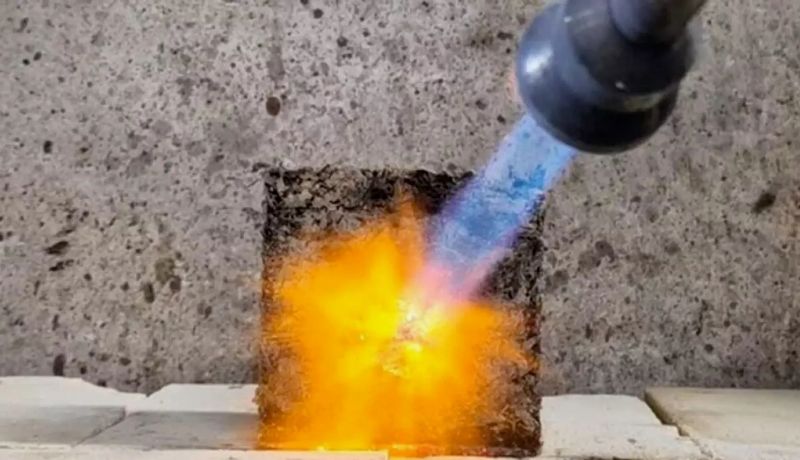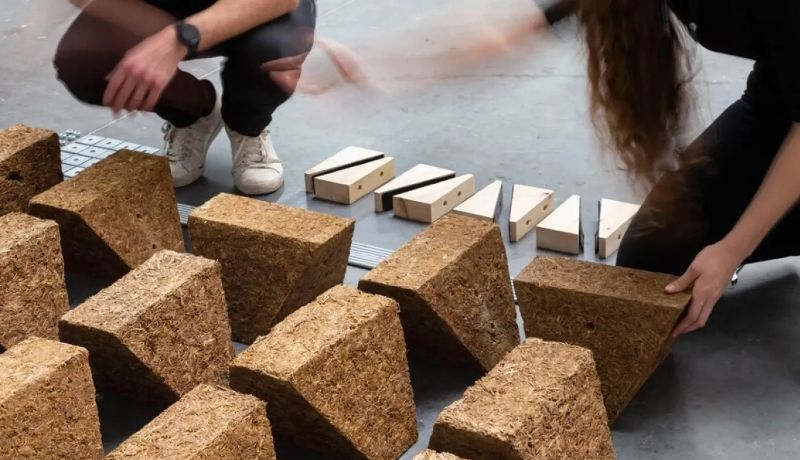

Modular building blocks made from sugarcane waste has a carbon footprint of 15% to 20% that of concrete
Following the harvest of sugarcane, a significant amount of fibrous stalk waste, known as bagasse, remains. This by-product has been repurposed into an environmentally friendly building material called Sugarcrete, which has garnered an international Climate Positive Award. (main pic: A modular reusable floor slab made of Sugarcrete.)
Unveiled last May, Sugarcrete was developed through collaboration between the University of East London and the British company Tate & Lyle Sugars.
Armor Gutierrez Rivas, Senior Lecturer in Architecture at UEL, highlighted the significant potential of this development, stating, “Sugarcane is the world’s largest crop by production volume – almost two billion tonnes of sugarcane are produced worldwide yearly, resulting in six hundred million tonnes of fibre bagasse as by-product. Using a bio-waste-based product like Sugarcrete, we could replace the traditional brick industry, offering a potential saving of 1.08 billion tonnes of CO2, 3 percent of the global CO2 production”
The composition of Sugarcrete involves mixing sugarcane bagasse with proprietary mineral-based binders. This blend is then compressed and allowed to cure, producing high-strength modular blocks that serve as alternatives to traditional clay or concrete bricks.

The advantages of such an innovation are significant. The university reports that Sugarcrete cures significantly faster than concrete (in just one week as opposed to four), it is considerably lighter (weighing only a quarter to a fifth as much per block of the same size), and it is more cost-effective to manufacture.
This cost-efficiency is especially relevant in sugarcane-producing regions. Farmers, rather than disposing of bagasse as landfill waste, could sell it to local enterprises for Sugarcrete production. This new material could then support local construction efforts, making them more viable than if reliant on imported concrete.
Watch their story
Moreover, Sugarcrete apparently only has a carbon footprint just 15% to 20% that of concrete. Traditional portland cement production, a key component of concrete, accounts for 5% to 8% of all CO2 emissions due to the energy required for its manufacture.
The team at UEL has highlighted the product’s potential with prototype modular floor blocks, designed to distribute loads across the structure through interlocking blocks. While some steel reinforcement is used, these Sugarcrete modular blocks require up to 90% less steel than their concrete counterparts.

At last year’s United Nations Climate Change Conference, the environmental organisation Green Cross UK awarded Sugarcrete the circular economy prize within its Climate Positive Awards. These awards celebrate initiatives combating climate change, with the circular economy category focusing on projects that minimise waste through the reuse of materials.
The Sugarcrete team is currently seeking agricultural collaborators in the Global South as part of its strategy for commercialising the technology.
See: https://grimshaw.global/news/articles/sugarcrete-revealed/